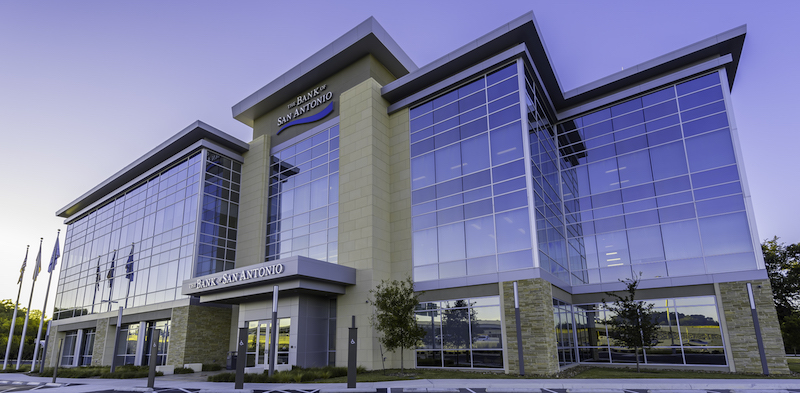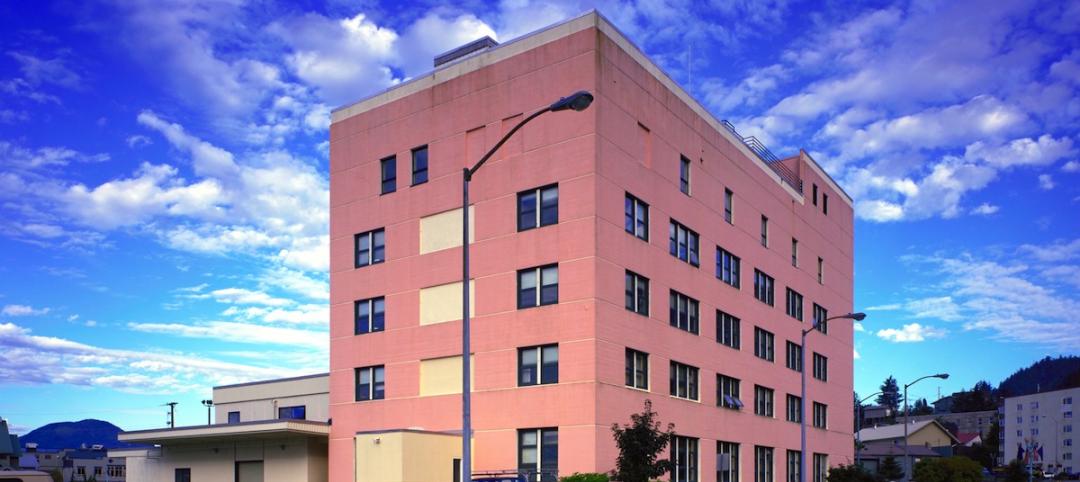The Bank of San Antonio’s reputation for strong relationships and quality service has led to exponential growth. In 2015, they broke ground on a 56,000-square-foot office building to accommodate an increasing number of customers and employees. Their HVAC system requirements included energy efficiency as well as high-quality comfort control. They learned that Variable Refrigerant Flow (VRF) technology from Mitsubishi Electric Cooling & Heating could help them achieve those goals.
Tom Moreno, Executive Vice President of Operations and Technology for Bank of San Antonio, served as the liaison for the bank and oversaw the project. He knew it would be a challenge to find an HVAC system that would meet everyone’s needs. “We were looking for a system that was energy efficient but that could also provide comfort and produce the temperatures that we needed throughout the organization.” Moreno and his team originally planned to install traditional HVAC technology, but with the assistance of local HVAC contractor, Flo-Aire Service Inc., and engineering consultant, Cleary Zimmermann Engineers, they decided to consider VRF.
Moreno discovered that VRF’s ability to zone would allow the bank to offer comfort to every person in the building. “We needed control in the offices, conference rooms, lobby area and other communal spaces in the building. We needed to be able to manage the fluctuation of people.”
Upon a recommendation from their distributor, Moreno selected a Mitsubishi Electric system over a competitive system. Eddie McDuff, vice president Flo-Aire said, “Being the first in the industry, [Mitsubishi Electric] worked out the kinks with their systems, and we really like their products. They’re easy to install and start up, and they also offer a good warranty. We’ve had really good success with them.”
 A CITY MULTI® VRF system keeps building occupants comfortable while maintaining impressive energy efficiency.
A CITY MULTI® VRF system keeps building occupants comfortable while maintaining impressive energy efficiency.
Since project completion, the VRF system has provided precise comfort control for the building’s occupants. Moreno said, “We like the flexibility and being able to set standardized temperatures throughout the organization. We can lock specific thermostats to control cost, but we can also unlock some thermostats when clients come into conference rooms.”
The VRF system not only keeps the employees comfortable, but it also keeps the bank’s technology safe, and most importantly, cool. Moreno said, “They installed wall hung units in the information technology equipment office, which is essential to operation of the organization. They can’t overheat.”
Moreno commented that the system accomplished the one true goal for the bank – comfort everywhere, at any time. “We’ve liked how we can set the temperature an hour before guests walk in during an event and immediately they can be comfortable. It has been easy to manage and helps us make sure the folks here are comfortable.”
The Bank of San Antonio’s new office space, complete with Mitsubishi Electric VRF, has been a success. Moreno said, “Our clients should get good service, and ensuring that our team is comfortable allows us to fulfill our promise to our clients that they will receive an exceptional experience.”
For more information:
Mitsubishi Electric Cooling & Heating
1-888-979-9686
Related Stories
| Jul 17, 2014
GSA study finds biomass boilers are viable option for heating federal buildings
After operating the first biomass boiler in the Ketchikan, Alaska, Federal Building, the U.S. General Services Administration (GSA) has concluded that biomass boilers are a viable alternative for hot-water-heated buildings where natural gas is unavailable.
| Jul 17, 2014
Alliance formed to promote research on indoor air quality
A memorandum of understanding creating the Indoor Environment Quality Global Alliance was signed on June 29; the Alliance was formed to explore ways in which industry groups could work together to address all aspects of indoor environmental quality and health.
| Jul 16, 2014
ASHRAE, IAQA team up to improve resources on indoor air quality
Indoor Air Quality Association will become part of the ASHRAE organization while maintaining its own brand and board; HQ will relocate to Atlanta.
| Jul 10, 2014
BioSkin 'vertical sprinkler' named top technical innovation in high-rise design
BioSkin, a system of water-filled ceramic pipes that cools the exterior surface of buildings and their surrounding micro-climates, has won the 2014 Tall Building Innovation Award from the Council on Tall Buildings and Urban Habitat.
| May 22, 2014
Facebook, Telus push the limits of energy efficiency with new data centers
Building Teams are employing a range of creative solutions—from evaporative cooling to novel hot/cold-aisle configurations to heat recovery schemes—in an effort to slash energy and water demand.
| May 22, 2014
7 ways it pays to use BIM for data centers
Here’s where AEC firms and owners are getting the most bang for the buck when using BIM/VDC to coordinate data center projects.
| Dec 10, 2013
16 great solutions for architects, engineers, and contractors
From a crowd-funded smart shovel to a why-didn’t-someone-do-this-sooner scheme for managing traffic in public restrooms, these ideas are noteworthy for creative problem-solving. Here are some of the most intriguing innovations the BD+C community has brought to our attention this year.
| Sep 9, 2013
Top 25 continuing education courses on BDCuniversity
An overview of the 25 most popular continuing education courses on BDCuniversity.com.
| Jun 18, 2013
Report: HVAC occupancy sensors could slash building energy demand by 18%
Researchers at the DOE's Pacific Northwest National Laboratory conclude that significant energy savings can be achieved by varying ventilation levels based on the number of people in a given space.















